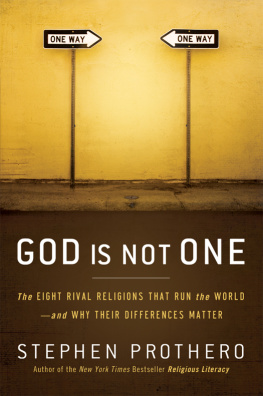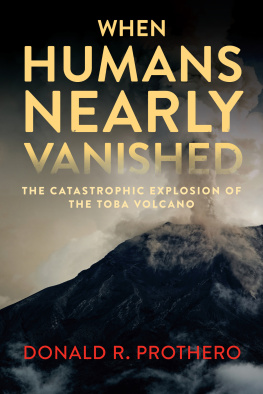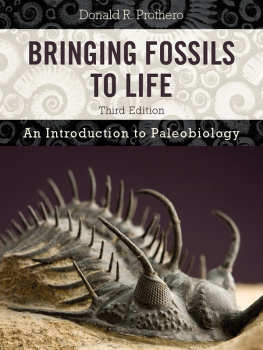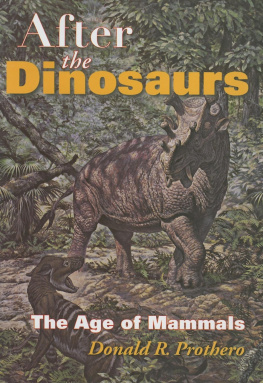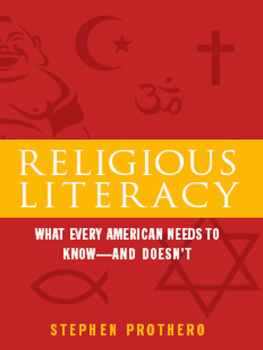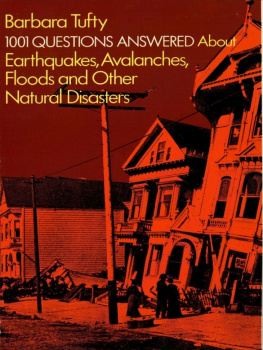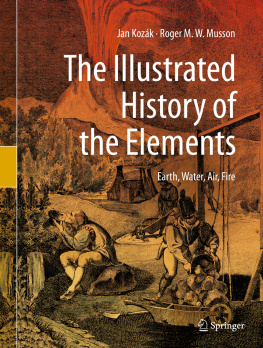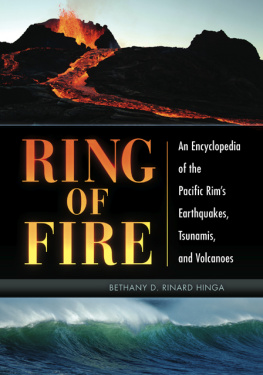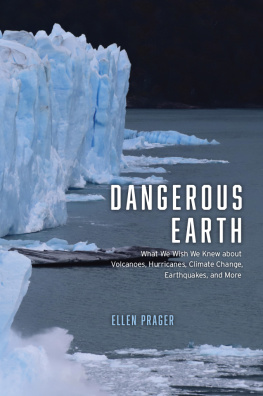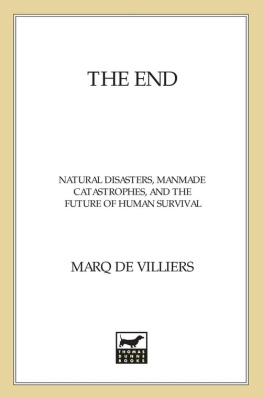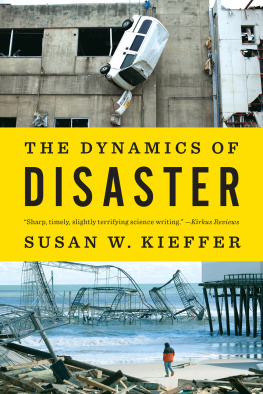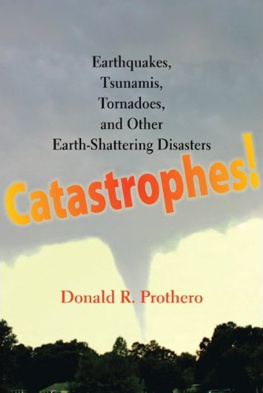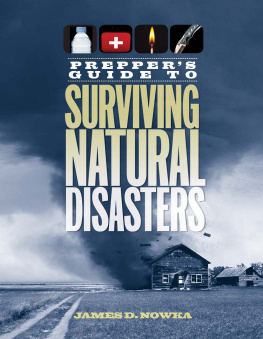Catastrophes!
Catastrophes!
Catastrophes!
Earthquakes, Tsunamis,
Tornadoes, and Other
Earth-Shattering Disasters
Donald R. Prothero
With Illustrations by
Pat Linse

2011 The Johns Hopkins University Press
All rights reserved. Published 2011
Printed in the United States of America on acid-free paper
2 4 6 8 9 7 5 3 1
The Johns Hopkins University Press
2715 North Charles Street
Baltimore, Maryland 21218-4363
www.press.jhu.edu
Library of Congress Cataloging-in-Publication Data
Prothero, Donald R.
Catastrophes! : earthquakes, tsunamis, tornadoes, and other earth-shattering disasters/
Donald R. Prothero.
p. cm.
Includes bibliographical references and index.
ISBN-13: 978-0-8018-9692-7 (hardcover : alk. paper)
ISBN-10: 0-8018-9692-4 (hardcover : alk. paper)
1. Catastrophes (Geology) I. Title.
QE506.P76 2011
551dc22 2010019631
A catalog record for this book is available from the British Library.
Special discounts are available for bulk purchases of this book. For more information,
please contact Special Sales at 410-516-6936 or specialsales@press.jhu.edu.
The Johns Hopkins University Press uses environmentally friendly book materials,
including recycled text paper that is composed of at least 30 percent post-consumer
waste, whenever possible. All of our book papers are acid-free, and our jackets and
covers are printed on paper with recycled content.
To my amazing wife,
Dr. Teresa LeVelle,
for all her encouragement and inspiration
Civilization exists by geologic consent,
subject to change without notice.
Will Durant, historian
Contents
6 Hurricanes, Cyclones, and Typhoons
Nature on the Rampage
Preface
The idea for this book originated from the horrors of the December 26, 2004, Indian Ocean tsunami. My wife and I watched the news coverage and thought that there was a need for such a book. This need was further emphasized by the 2005 Hurricane Katrina disaster, the 2008 Mississippi Valley floods, and the 2010 Haiti earthquake. However, my heavy teaching load and many other research and writing commitments prevented me from pursuing this project until a summer without a field season (2009) allowed me time to work on it. Ive been teaching about these events in my introductory physical geology courses for more than 25 years now, but this book gave me a chance to expand on the usual material and to take a novel, more paleontological approach to natural disasters.
I thank my editors at the Johns Hopkins University Press, especially editor Vincent J. Burke and copyeditor Andre Barnett, for all their help with producing this book. I thank Eddie Bromhead, Chuck Chapin, and two anonymous reviewers for their comments on the earlier drafts. I thank Kristine Wendt for her wonderful artwork. I especially thank Pat Linse for her incredible transformation of the art in the book, and my wife for cleaning up and improving many of the images.
Finally, I am grateful to my wonderful family for letting me focus on this project in peace and quiet while I wrote it over a few weeks in July 2009. It is always fun to show my incredible sons Erik, Zachary, and Gabriel the power of the earth and wonders of rocks and fossils. This work would not have been possible without the loving support of my wife, Dr. Teresa LeVelle, who did everything she could to help me concentrate and to keep at my writing when many other distractions beckoned.
Prologue
Catastrophism and Uniformitarianism
In the mid-1700s, western European thought was at a crossroads. For more than a thousand years, all scholarship and learning in Europe was the domain of priests and clerics, because they were practically the only people with at least some education. Most people in the world were illiterate, not able to read even their native language. Trained by their church, these clerics framed all thought in terms of the Bible, and the Bible was their first source of truth, whether for historical events or as an explanation of nature. Almost all scholarship focused on pointless theological debates (the well-known example: How many angels could dance on the head of a pin?), and scholars slavishly copied and believed every ancient dogma that the church approved. Medieval scholars were especially fond of Aristotle and took his natural history literally, even as the evidence from real organisms showed that it was manifestly false.
Biblical stories were taken at face value, and anyone who dared to dissent from this viewpoint could suffer severely. Many, such as philosopher and astronomer Giordano Bruno and others, were burned at the stake for heresy. Galileo spent the last years of his life under house arrest for suggesting that the earth was not the center of the universe. Copernicus wisely did not release his ideas for publication until he was dying, because he rightly feared that he would be tortured to death if they were published while he was alive. There were a few Renaissance humanist scholars, such as Petrarch, who coined the term dark ages for the millennium of medieval ignorance after the fall of the Roman Empire, but even they were usually trained as priests and did not challenge Catholic Church dogma.
In the 1600s and early 1700s, the works of giants such as Isaac Newton, Francis Bacon, and Ren Descartes had shown the power of explaining nature by mathematical methods and natural law. Even though he was a devout man, Newton did not require God to move the planets and starsfor him, the natural laws of gravity were a simpler, more natural and better explanation. Natural history was changing, with the excitement of discovery and the description of animals and plants that did not conform to Aristotles views. Philosophers such as Immanuel Kant, Baruch de Spinoza, Descartes, Gottfried Wilhelm Leibniz, and Johann Wolfgang von Goethe boldly speculated on matters such as free will and determinism, the nature of good and evil, and how to live a moral life, often resorting entirely to logic without invoking the Bible or God. Descartes famous maxim, Cogito ergo sum (I think, therefore I am), is a central statement of this philosophy. Political theorists such as John Locke in England and Montesquieu in France began to talk about human rights, natural liberty, separation of powers, freedom of speech and thought, and they openly questioned the hierarchy of power of kings, noblemen, and the church over the common people.
The mid- and late 1700s saw a movement throughout Western Europe known as the Enlightenment. The term has been defined in many ways, but the basic idea was that human logic and reason were the primary method of finding the truth about the world, not adherence to ancient documents like the Bible or the writings of Aristotle. New scholars built on the earlier thoughts of philosophers of the late 1600s and early 1700s, and these ideas of reason and natural law advanced in nearly every European center of learning. France saw the iconoclastic writings of Voltaire, Rousseau, Diderot, Buffon, as well as questioning by many others of the power of the Catholic Church and the King, arguing for a world based on reason and humanism without the powerful political and philosophical stranglehold of the church. England has its share of Enlightenment thinkers, especially in the political sphere, and they in turn influenced Benjamin Franklin, Thomas Jefferson, and Thomas Paine, who used these principles to establish a moral argument for the American Revolution and designed a new form of government enshrined in the American Constitution.
Next page

